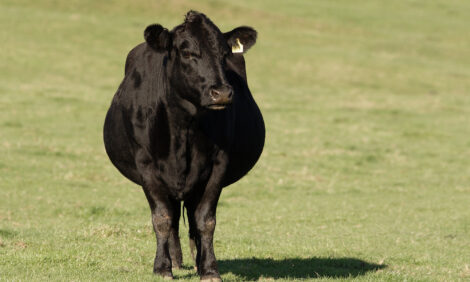



Do You Know When Your Cows Will Calve Next Spring?
Instead of reactionary decisions, reproductive patterns and cow production are monitored and utilized as part of a management plan, writes Kris Ringwall, Beef Specialist at the North Dakota State University Extension Service.The last open cows were shipped to town and all the cows left at the ranch are confirmed pregnant.
Statistics from the CHAPS program managed by the North Dakota Beef Cattle Improvement Association (NDBCIA) show that 93.5 percent of the cows returned to the wintering facilities are pregnant. The open cows are sorted and sent.
Of those pregnant cows that remain, 0.73 percent lose the pregnancy prior to calving. The calf either is absorbed or physically aborted.
Combining the previous sets of statistics, a good estimate of cows expected to calve in the spring would be 93 cows for every 100 cows exposed to the bull.
It is important to know if a cow is pregnant. It also is good to know what the expected calving date is.
The actual calving date for an individual cow is not practical to calculate because the variation in pregnancy duration is wide for cattle. However, a herd calving distribution table can be calculated and is a very useful piece of data for managing a cowherd.
The calving distribution table informs a rancher of pregnant cows and when to expect calves. Statistics from CHAPS users show that 63 percent of the cows would be expected to calf within the first 21 days of the calving season next spring and 87 percent should be done calving within six weeks from the start of calving.
In the final analysis, if 100 cows were exposed, we will expect 93 cows to calf. Fifty-eight calves should be born during the first three weeks of calving.
Twenty-two calves would be born during the second three weeks for a total of 80 calves during the first six weeks of calving. For all practical purposes, all but four of the cows should calve within three months.
One might be saying, “Well, I don't know if I need to know all that information.” However, the key is that the information drives well-managed herds and guides managerial input and decision-making.
Feed and labor can be planned so the operation runs smoother. This year, especially in western North Dakota, feed is short, so feed allocation planning is critical for next spring. Cows that are pregnant do not need the same ration as cows that have calved. Saving limited higher-quality inputs and timing the right feed to the right stage of a cow's life is critical.
Cows that calve first will reach peak milk production earlier than the later-calving cows and should receive more feed. A feeding plan designed to match a cow’s needs saves on feed.
Utilizing historical calving patterns will affect the bottom line. There are other uses of the data, but the major concept is that we can do more than just react; we also can plan.
Next spring's turnout to grass is not far away and a lot is going to happen between now and then. The key is to become engaged in utilizing data to make positive and effective management decisions.
Current CHAPS users and NDBCIA members are steering their operation, not pushing their operation. When they need to make a decision, they know how to ask the right questions of their data to get answers that will move them forward.
Instead of reactionary decisions, reproductive patterns and cow production are monitored and utilized as part of a management plan. While there are several organizations that work with cow-calf production records, please do not hesitate to contact the NDBCIA for assistance.
The NDBCIA is a partner for cattle producers. Since 1963, the NDBCIA has helped producers collect and analyze data for use in management planning and decision-making for performance beef cattle production.
December 2008


